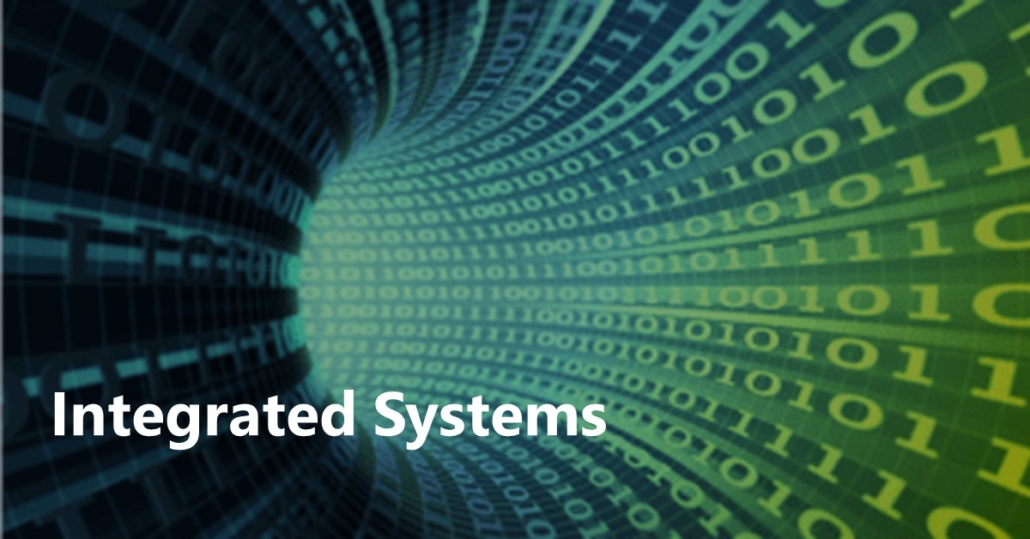
Our Integrated Systems department innovates, designs, and prototypes high-performance intelligent distributed systems, applications, and services on complex, large-scale communication networks like 5G and beyond. We develop next-generation wireless technologies for sensing the world, localizing critical assets, and improving the capacity, coverage, and scalability of communication networks like 5G and beyond.
New application needs have always sparked human innovation. A decade ago, cloud computing enabled high-value enterprise services with a global reach and scale but with several minutes or seconds of delay. Large-scale services like enterprise resource planning (ERP) were a corner-case scenario, often designed as one-off systems. Today, applications like social networks, automated trading, and video streaming have made large-scale services the norm rather than the exception. In the future, advances in 5G networks and an explosion in smart devices, microservices, databases, networking, and computing tiers will make services so complex that humans cannot tune or manage them.
The sheer scale, dynamic nature, and concurrency in services on 5G slices will require them to be intelligent and autonomic. They will need to continuously self-assess, learn, and automatically adjust for resource needs, data quality, and service reliability. The need for increased efficiency and reduced latency between measurement and action drives our design of real-time distributed systems for feature extraction, computation, and machine learning on multimodal streaming data. We are conducting extensive research on creating end-to-end solutions using multimodal sensing technologies in the retail, public safety, and transportation domains.
Our 5G cellular network research encompasses the development of technologies on the Radio Access Network (RAN), the mobile edge, and the 5G LAN. Within the RAN, we are developing technologies that optimize massive MIMO/MU-MIMO deployments and millimeter-wave access (e.g., transmission at 28 GHz to nomadic/mobile users). At the mobile edge (MEC), we focus on virtualization, scalability, and cloud deployment of appropriate services. Our 5G LAN research extends the benefits of 5G slicing technology to enterprise LANs to position the enterprise as the new MEC.
Read our news and publications from our world-class team of researchers from our Integrated Systems department.
Identification of people with elevated body temperature can reduce or dramatically slow down the spread of infectious diseases like COVID-19. We present a novel fever-screening system, F 3 S, that uses edge machine learning techniques to accurately measure core body temperatures of multiple individuals in a free-flow setting. F 3 S performs real-time sensor fusion of visual camera with thermal camera data streams to detect elevated body temperature, and it has several unique features: (a) visual and thermal streams represent very different modalities, and we dynamically associate semantically-equivalent regions across visual and thermal frames by using a new, dynamic alignment technique that analyzes content and context in real-time, (b) we track people through occlusions, identify the eye (inner canthus), forehead, face and head regions where possible, and provide an accurate temperature reading by using a prioritized refinement algorithm, and (c) we robustly detect elevated body temperature even in the presence of personal protective equipment like masks, or sunglasses or hats, all of which can be affected by hot weather and lead to spurious temperature readings. F 3 S has been deployed at over a dozen large commercial establishments, providing contact-less, free-flow, real-time fever screening for thousands of employees and customers in indoors and outdoor settings.
Centralized cloud computing with 100+ milliseconds network latencies cannot meet the tens of milliseconds to sub-millisecond response times required for emerging 5G applications like autonomous driving, smart manufacturing, tactile internet, and augmented or virtual reality. We describe a new, dynamic runtime that enables such applications to make effective use of a 5G network, computing at the edge of this network, and resources in the centralized cloud, at all times. Our runtime continuously monitors the interaction among the microservices, estimates the data produced and exchanged among the microservices, and uses a novel graph min-cut algorithm to dynamically map the microservices to the edge or the cloud to satisfy application-specific response times. Our runtime also handles temporary network partitions, and maintains data consistency across the distributed fabric by using microservice proxies to reduce WAN bandwidth by an order of magnitude, all in an application-specific manner by leveraging knowledge about the application’s functions, latency-critical pipelines and intermediate data. We illustrate the use of our runtime by successfully mapping two complex, representative real-world video analytics applications to the AWS/Verizon Wavelength edge-cloud architecture, and improving application response times by 2x when compared with a static edge-cloud implementation.
The recent innovation of frequency-shifted (FS) backscatter allows for backscattering with commodity devices, which are inherently half-duplex. However, their reliance on oscillators for generating the frequency-shifting signal on the tag, forces them to incur the transient phase of the oscillator before steady-state operation. We show how the oscillator’s transient phase can pose a fundamental limitation for battery-less tags, resulting in significantly low bandwidth efficiencies, thereby limiting their practical usage.To this end, we propose a novel approach to FS-backscatter called xSHIFT that shifts the core functionality of FS away from the tag and onto the commodity device, thereby eliminating the need for on-tag oscillators altogether. The key innovation in xSHIFT lies in addressing the formidable challenges that arise in making this vision a reality. Specifically, xSHIFT’s design is built on the construct of beating twin carrier tones through a non-linear device to generate the desired FS signal – while the twin RF carriers are generated externally through a careful embedding into the resource units of commodity WiFi transmissions, the beating is achieved through a carefully-designed passive tag circuitry. We prototype xSHIFT’s tag, which is the same form factor as RFID Gen 2 tags, and characterize its promising real-world performance. We believe xSHIFT demonstrates one of the first, truly passive tag designs that has the potential to bring commodity backscatter to consumer spaces.


